
NEW REPORT: ` Sustainable Groundwater Management Act Governance Strategies Summary
From the California Water Institute at Fresno State:
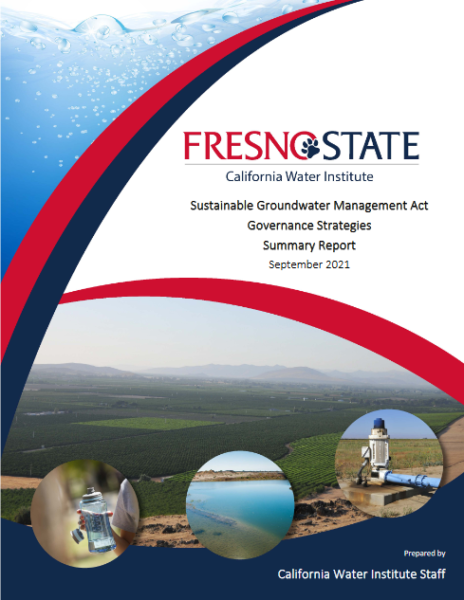 The California Water Institute published a report explaining how the first groundwater sustainability agencies were created and the organizational and governance challenges they navigated.
The California Water Institute published a report explaining how the first groundwater sustainability agencies were created and the organizational and governance challenges they navigated.
A three-bill legislative package referred to as the Sustainable Groundwater Management Act created a fundamental change in the governance of California’s groundwater. The act requires, with some exceptions, the formation of groundwater sustainability agencies for identified groundwater subbasins.
The report includes observations from interviews of policymakers, technical experts and thought leaders.
The report outlines the initial implementation of these new laws in 21 critically overdrafted groundwater subbasins. Based on a review of multiple statutes, regulations, early research, official government documents and interviews with individuals involved in the process, the authors explain how the first groundwater sustainability agencies were created, and the organizational and governance challenges they navigated, Green said.
Click here to continue reading this press release.
Click here to view/download the report.
Register for the free webinar on February 1st discussing the report.

CCST BRIEFING: Remote Sensing Technologies and Water Resilience
 Can we look to the sky to address California’s water challenges? As California continues to grapple with frequent drought and overdrafted aquifers, satellite-based measurements offer a cost-effective way to generate high-resolution data on groundwater resources across a wide geographic area. In conjunction with other ground-based monitoring, data from satellites can help inform sustainable groundwater management.
Can we look to the sky to address California’s water challenges? As California continues to grapple with frequent drought and overdrafted aquifers, satellite-based measurements offer a cost-effective way to generate high-resolution data on groundwater resources across a wide geographic area. In conjunction with other ground-based monitoring, data from satellites can help inform sustainable groundwater management.
In December, the California Council on Science and Technology brought three experts together to discuss the role of remote sensing technologies to provide information to support water management decisions.
Panel discussed groundwater applications of Open ET and InSAR to groundwater management in the San Joaquin Valley.

2022 SAFER Aquifer Risk Map: Estimating groundwater quality risk for domestic wells and state small water systems
From the State Water Board:
 “The Safe and Affordable Funding for Equity and Resilience (SAFER) drinking water program is a set of tools, funding sources, and regulatory authorities to provide assistance to the nearly one million Californians who currently lack safe drinking water.
“The Safe and Affordable Funding for Equity and Resilience (SAFER) drinking water program is a set of tools, funding sources, and regulatory authorities to provide assistance to the nearly one million Californians who currently lack safe drinking water.
The Aquifer Risk Map fulfills one of the requirements in Senate Bill 200 (Monning, statutes of 2019), and is a component of the SAFER program. The Aquifer Risk Map uses existing water quality data to estimate where domestic wells (serving less than five connections) and state small water systems (serving between 5 and 15 connections) are at risk of accessing groundwater that does not meet primary drinking water standards.
The Aquifer Risk Map is intended to inform Water Boards staff in the preparation of the annual Fund Expenditure Plan and to help identify at-risk state small water systems and domestic wells as required in SB 200. For the 2022 Needs Assessment, the SAFER program will combine the results of the Aquifer Risk Map with drought risk data from the Department of Water Resources to produce a combined risk assessment for state small water systems and domestic wells. … ”
Click here to continue reading this press release from the State Water Board.

SGMA in the News
Groundwater plans for Westlands Water District, three other areas, deemed “incomplete”
 “Groundwater plans for two regions in the western San Joaquin Valley were deemed deficient by the state Department of Water Resources (DWR) on Friday. The Westside subbasin, overseen by Westlands Water District, and the Delta-Mendota subbasin’s plans were officially labeled as “incomplete” by DWR. The state also found groundwater plans for the Paso Robles and Cuyama water subbasins incomplete. Managers of those plans will now have 6 months to make recommended changes and submit the plans for approval again. If the plans are rejected at that time, the state Water Resources Control Board could take over the subbasins and manage groundwater directly, or take other, more punitive action. ... ” Read more from SJV Water here: Groundwater plans for Westlands Water District, three other areas, deemed “incomplete”
“Groundwater plans for two regions in the western San Joaquin Valley were deemed deficient by the state Department of Water Resources (DWR) on Friday. The Westside subbasin, overseen by Westlands Water District, and the Delta-Mendota subbasin’s plans were officially labeled as “incomplete” by DWR. The state also found groundwater plans for the Paso Robles and Cuyama water subbasins incomplete. Managers of those plans will now have 6 months to make recommended changes and submit the plans for approval again. If the plans are rejected at that time, the state Water Resources Control Board could take over the subbasins and manage groundwater directly, or take other, more punitive action. ... ” Read more from SJV Water here: Groundwater plans for Westlands Water District, three other areas, deemed “incomplete”
Westlands Water District responds to incomplete determination for Westside Subbasin Groundwater Sustainability Plan
“Today the Department of Water Resources (DWR) announced that the Westside Subbasin Groundwater Sustainability Plan (Westside GSP) submitted by Westlands Water District, acting as a Groundwater Sustainability Agency, has received an incomplete determination under the provisions of the Sustainable Groundwater Management Act (SGMA). The determination starts a 180-day window to address DWR’s comments. In response, Westlands Water District General Manager Tom Birmingham issued the following statement: “Westlands has monitored groundwater conditions since the 1950s and has actively managed groundwater since the adoption of its Groundwater Management Plan in 1996. The Westside GSP, adopted pursuant to additional authorities provided by SGMA, includes numerous actions to ensure that groundwater levels stay at or above 2015 levels. The Westside GSP includes advanced monitoring, data, metering, and groundwater recharge programs to ensure that neither the groundwater basin nor the local communities that rely on it will be harmed by continued extractions of groundwater.” … ” Continue reading at the Westlands Water District here: Westlands Water District responds to incomplete determination for Westside Subbasin Groundwater Sustainability Plan
Humboldt County supervisors OK Eel River Basin groundwater sustainability plan
“The Humboldt County Board of Supervisors approved a state-mandated sustainability plan for groundwater in the Eel River Basin on Tuesday. Required as a part of the Sustainable Groundwater Management Act of 2014, the groundwater sustainability plan provides guidance on how to manage the Eel River Valley’s complex system of groundwater and surface water resources, especially during critical drought years. The plan must be submitted to the California Department of Water Resources for evaluation and assessment by the end of the month. The plan must be updated every five years. ... ” Read more from the Eureka Times-Standard here: Humboldt County supervisors OK Eel River Basin groundwater sustainability plan
Federal, local officials kick off millions in repairs to Friant-Kern Canal
 “Local and Federal water officials and lawmakers celebrated the groundbreaking of a massive project on the Friant-Kern Canal on Tuesday, marking the start of the canal’s restoration. Coming in at $187 million, the first portion of the massive effort will restore capacity within the canal in a 10-mile portion that has been affected by subsidence: the sinking of the canal’s bottom from groundwater removal. With 33 miles of the Friant-Kern Canal in total that have sunk due to subsidence, Tuesday’s groundbreaking kicks off the first phase of the Friant-Kern Canal Middle Reach Capacity Correction restoration project. … ” Read more from the San Joaquin Valley Sun here: Federal, local officials kick off millions in repairs to Friant-Kern Canal
“Local and Federal water officials and lawmakers celebrated the groundbreaking of a massive project on the Friant-Kern Canal on Tuesday, marking the start of the canal’s restoration. Coming in at $187 million, the first portion of the massive effort will restore capacity within the canal in a 10-mile portion that has been affected by subsidence: the sinking of the canal’s bottom from groundwater removal. With 33 miles of the Friant-Kern Canal in total that have sunk due to subsidence, Tuesday’s groundbreaking kicks off the first phase of the Friant-Kern Canal Middle Reach Capacity Correction restoration project. … ” Read more from the San Joaquin Valley Sun here: Federal, local officials kick off millions in repairs to Friant-Kern Canal
East Kaweah GSA limits groundwater pumping
“In the face of deepening drought in October, the East Kaweah Groundwater Sustainability Agency (EKGSA) passed an emergency groundwater allocation policy, and for the first time ever, the Tulare County area’s farmers were given limits and fines for how much water they can pump out of the increasingly parched ground. EKGSA governs water for much of the eastern portion of the Kaweah Sub Basin, which includes the towns of Lindsay and Strathmore, and the Exeter and Ivanhoe irrigation districts and the farmland that surrounds them. Michael Hagman, EKGSA’s executive director said even in wet years and the rain in late 2021, they just aren’t seeing wells recovering. … ” Read more from the Foothills Sun-Gazette here: East Kaweah GSA limits groundwater pumping
Ridgecrest: Water District focuses on recycled water for sustainability
“The Indian Wells Valley Water District outlined groundwater sustainability priorities at the Water District annual workshop on Wednesday, January 19. At the top of the list were two projects: recycled water and improving data on the scientific model of the IWV groundwater basin. The list of priorities were put together at the request of the Indian Wells Valley Groundwater Authority (IWVGA), a government agency tasked with drafting and enacting the local basin’s groundwater sustainability plan (GSP). IWVGA is applying for a grant from the Department of Water Resources Sustainable Groundwater Management Act Implementation Program – Round 1. The grant could award IWVGA with up to $7.6 million to put towards local groundwater sustainability projects. … ” Read more from the Ridgecrest Independent here: Ridgecrest: Water District focuses on recycled water for sustainability
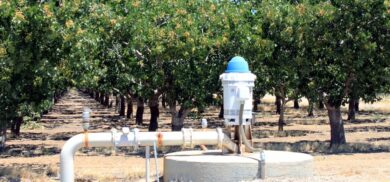
DWR Releases “Incomplete” Groundwater Sustainability Plan Assessments to Agencies, Initiating 180-day Timeline to Correct Deficiencies
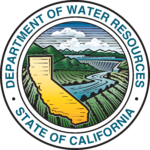 From the Department of Water Resources:
From the Department of Water Resources:
Today, the California Department of Water Resources (DWR) released four determinations on groundwater sustainability plans (GSPs) developed by local agencies to meet the requirements of the Sustainable Groundwater Management Act (SGMA).
DWR has found in its technical review that the GSPs in four basins contain deficiencies that preclude approval and the plans are determined to be Incomplete. The four basins include the Westside Subbasin, Delta-Mendota Subbasin, Cuyama Valley Basin, and Paso Robles Subbasin, located on the Central Coast and western portions of the San Joaquin Valley.
The basins with GSPs that are determined Incomplete have 180 days from today’s release of DWR’s determination to address deficiencies and resubmit their corrected GSPs to the Department for review.
DWR will issue eight additional determinations for basins that submitted GSPs in 2020 by the required two-year deadline.
The determinations can be found on the Department’s SGMA Portal. For more information related to these GSP Assessments, please find the Frequently Asked Questions: Incomplete Determinations & Next Steps on our website. For questions, please contact the Sustainable Groundwater Management Office by emailing sgmps@water.ca.gov.

THIS JUST IN … DWR Releases Additional Groundwater Sustainability Plan Assessments to Agencies
 From the Department of Water Resources:
From the Department of Water Resources:
Today, the California Department of Water Resources (DWR) released two additional determinations on groundwater sustainability plans developed by local agencies to meet the requirements of the Sustainable Groundwater Management Act (SGMA).
DWR has approved plans for the Los Posas Valley Basin in Ventura County and the Indian Wells Valley Basin, primarily located in northeast Kern County. These two plans are approved with recommended corrective actions that the groundwater sustainability agencies (GSAs) will need to address in their next plan update, due in January 2025. The GSAs for these basins will continue implementing their plans to achieve SGMA’s goal of groundwater sustainability within 20 years.
The determinations can be found on the Department’s SGMA Portal. For questions, please contact the Sustainable Groundwater Management Office by emailing sgmps@water.ca.gov.
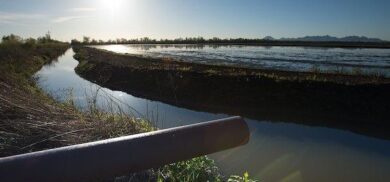
Comprehensive California Groundwater Update Released to Provide Better Understanding of Groundwater Basins
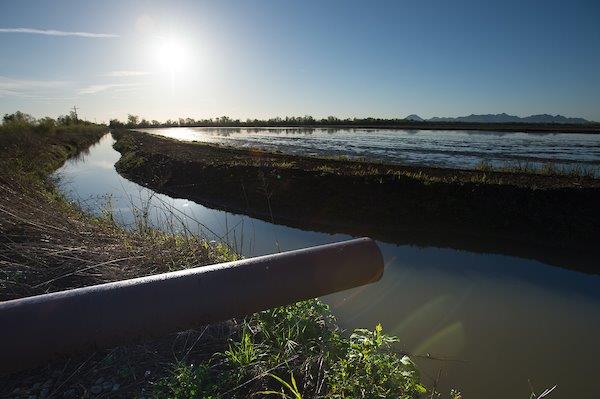 With California facing a severe drought and an increased reliance on the State’s groundwater basins, today the Department of Water Resources (DWR) released the final version of California’s Groundwater – Update 2020. The report, also known as Bulletin 118, contains critical information about the condition and use of the state’s groundwater, which is especially important as California faces the real-time impacts of climate change and drought.
With California facing a severe drought and an increased reliance on the State’s groundwater basins, today the Department of Water Resources (DWR) released the final version of California’s Groundwater – Update 2020. The report, also known as Bulletin 118, contains critical information about the condition and use of the state’s groundwater, which is especially important as California faces the real-time impacts of climate change and drought.
“Groundwater plays a central role in sustaining our state’s ecosystems, businesses, agriculture, and people, with some Californians relying solely on groundwater for drinking water,” said DWR Director Karla Nemeth. “The updated California’s Groundwater provides key information for the state and locals to better understand and manage groundwater as we adapt to variations in climate and navigate a historic drought.”

OpenET: A Transformative Tool for Tracking Water in the U.S. West
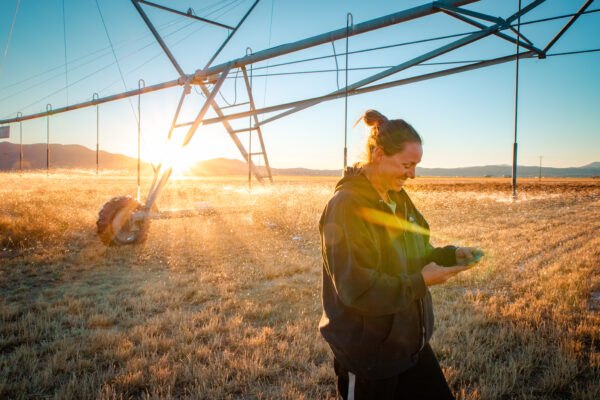 Openet is a satellite-based data resource supplying crucial water use information in 17 Western U.s. States.
Openet is a satellite-based data resource supplying crucial water use information in 17 Western U.s. States.
Using the best available science to provide easily accessible satellite-based estimates of water use, OpenET is being used to improve U.S. water management. The data is available on 17 western states, most notably the area covered by the Colorado River basin.
The “ET” in OpenET stands for evapotranspiration, which is the process through which water leaves plants, soils, and other surfaces and returns to the atmosphere. It’s a measurement that farmers can use to estimate the amount of water being taken up or used by their fields and crops and that will usually need to be replaced through irrigation or rainfall.

California Spent Decades Trying to Keep Central Valley Floods at Bay. Now It Looks to Welcome Them Back
Land and waterway managers labored hard over the course of a century to control California’s unruly rivers by building dams and levees to slow and contain their water. Now, farmers, environmentalists and agencies are undoing some of that work as part of an accelerating campaign to restore the state’s major floodplains.
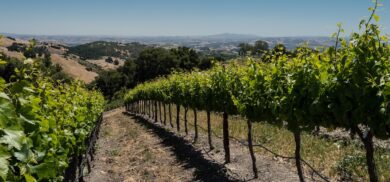
Department of Conservation previews SGMA multi-benefit land repurposing program

Kelly M. Grow/ California Department of Water Resources
Upcoming workshops to gather public input on the new program
At the September meeting of the California Water Commission, Kealiʻi Bright, Assistant Director of the Division of Land Resource Protection at the California Department of Conservation (or DOC), gave a presentation on a new program being spun up to repurpose farmland being retired due to SGMA implementation.
Mr. Bright began by acknowledging that the Department of Conservation being at a Water Commission might be unusual because they are not a groundwater agency or any kind of water agency, but they are an agency with a suite of programs that invest in natural and working lands’ land use, they support conservation organizations that do work within natural and working lands, and they have different programs that fund permanent conservation in those lands.
“So while we aren’t a water agency with water expertise, what we do have is a pretty a pretty vast and strong network of conservation partners throughout the state,” he said. “We are really excited to help DWR, the Water Board, and all of you implement what is a little bit further beyond the horizon of groundwater sustainability efforts.”
Click here to continue reading this article at Maven’s Notebook.
